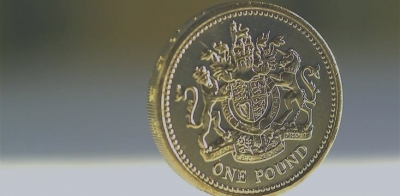
The British pound sterling is the world’s oldest currency still in use. Commonly known as the pound, its origins can be traced back to the Kingdom of Mercia in the 8th century. The sterling is the fourth most-traded currency in the foreign exchange market after the U.S. dollar, the euro, and the Japanese yen.
Sterling silver pennies have been around since 775AD, with King Offa of Mercia generally credited with being responsible for the widespread adoption of the coins. The first fully printed banknotes were introduced in 1853. Before that, following its establishment in 1694, the Bank of England only issued partially printed notes with the ‘£’ sign as well as the first digit. The numbers had to be added by hand and each note had to be signed by one of the bank’s cashiers. Today’s banknotes developed out of these original handwritten notes.
Each bank note (£5, £10, £20, £50) has its own colour and size – the greater the value, the larger the note. All coins (1p, 2p, 5p, 10p, 20p, 50p, £1 and £2) carry the profile of Queen Elizabeth II, facing right. Traditionally, monarchs alternate the direction they face on pound coins. The first banknote featuring the Queen’s portrait was a £1 note issued in 1960.
Thin metal threads were embedded in banknotes in 1940. This acted as protection against forgery during the Second World War, when the British economy was under threat. The pound is not only used in the UK; variations also circulate in Jersey, Guernsey, Isle of Man, Gibraltar, Falkland Islands, Saint Helena, Ascension, Tristan da Cunha, and South Georgia and the South Sandwich Islands.
Credit : CMC Markets
Picture Credit : Google




